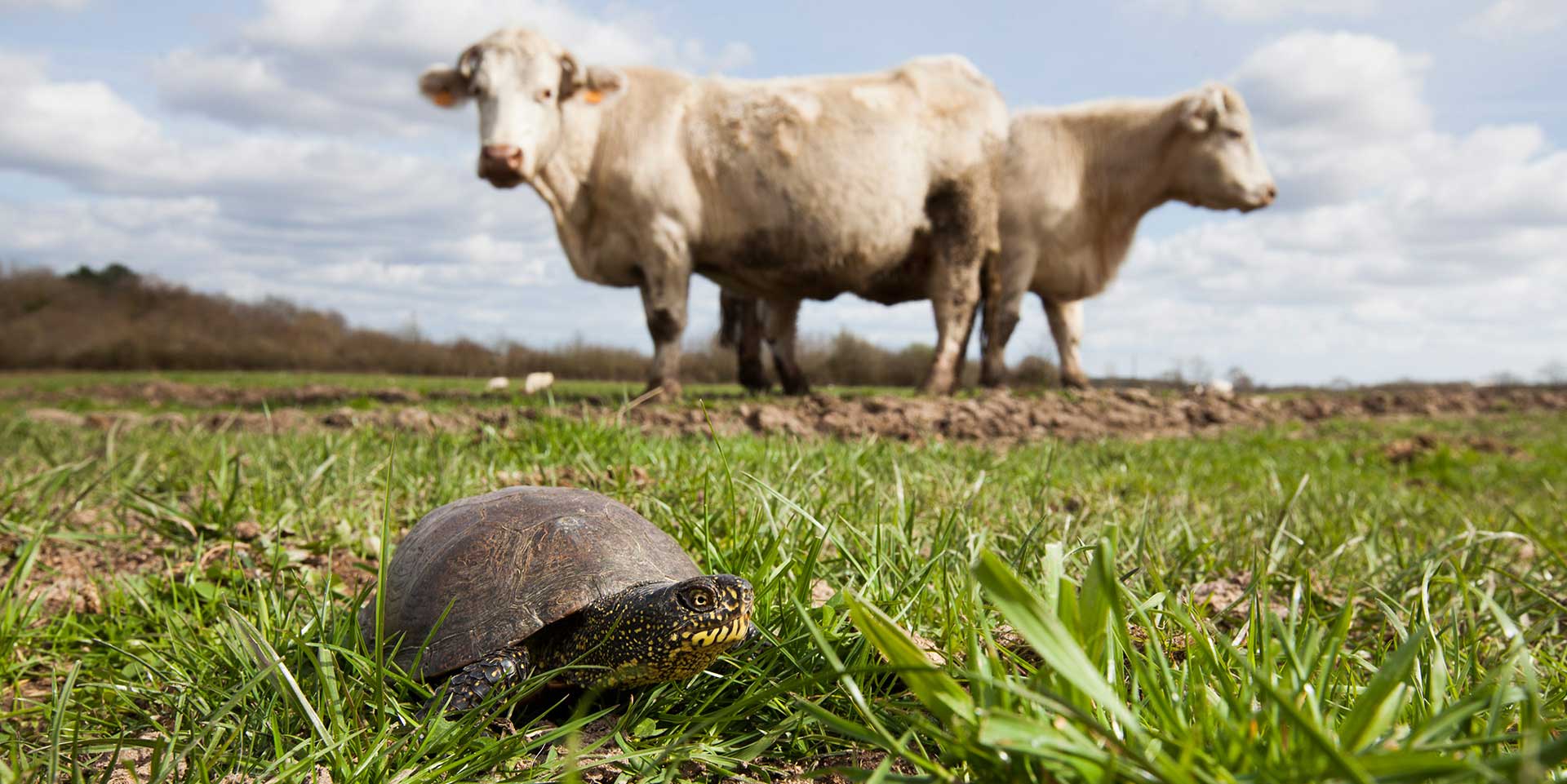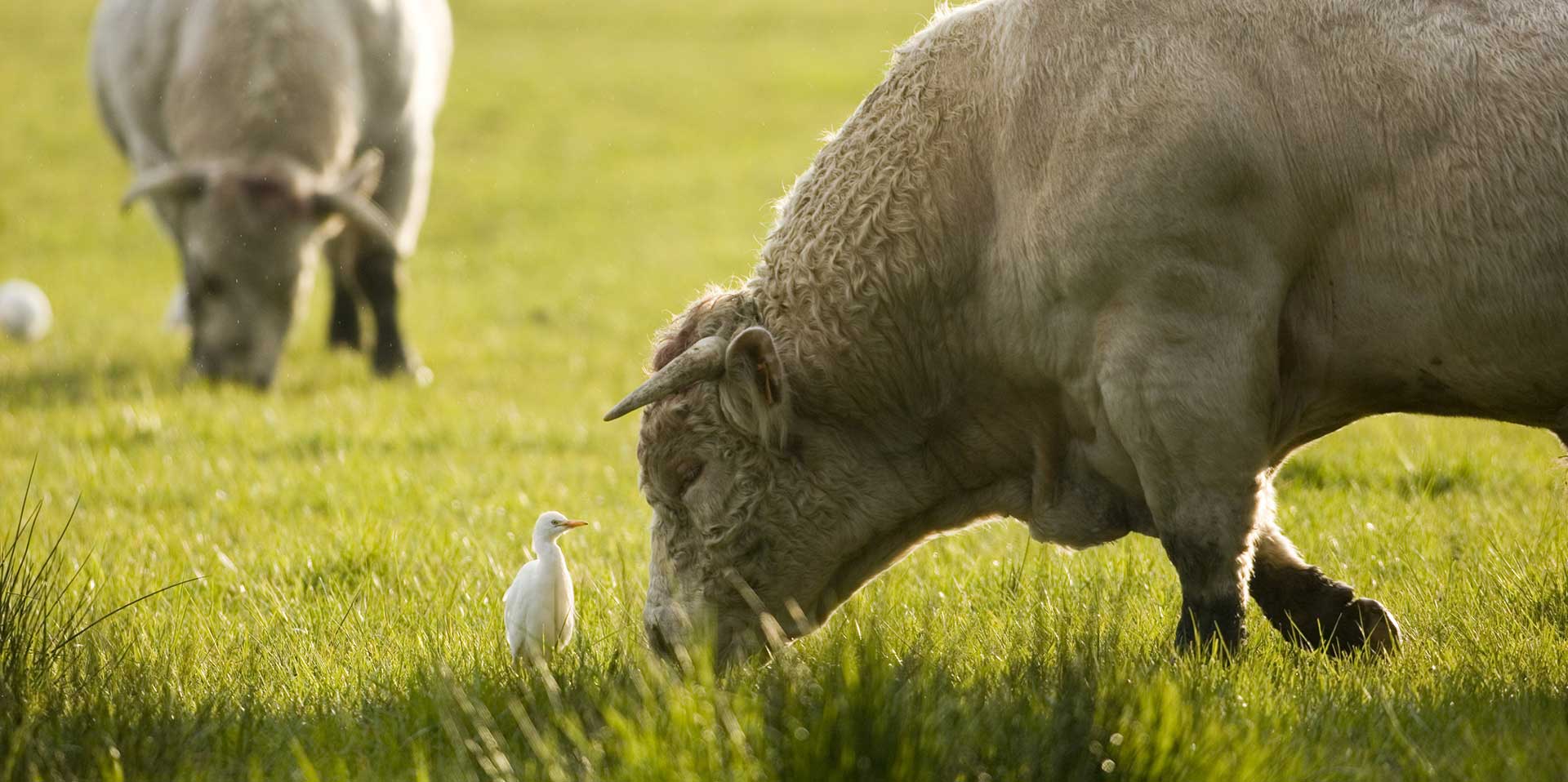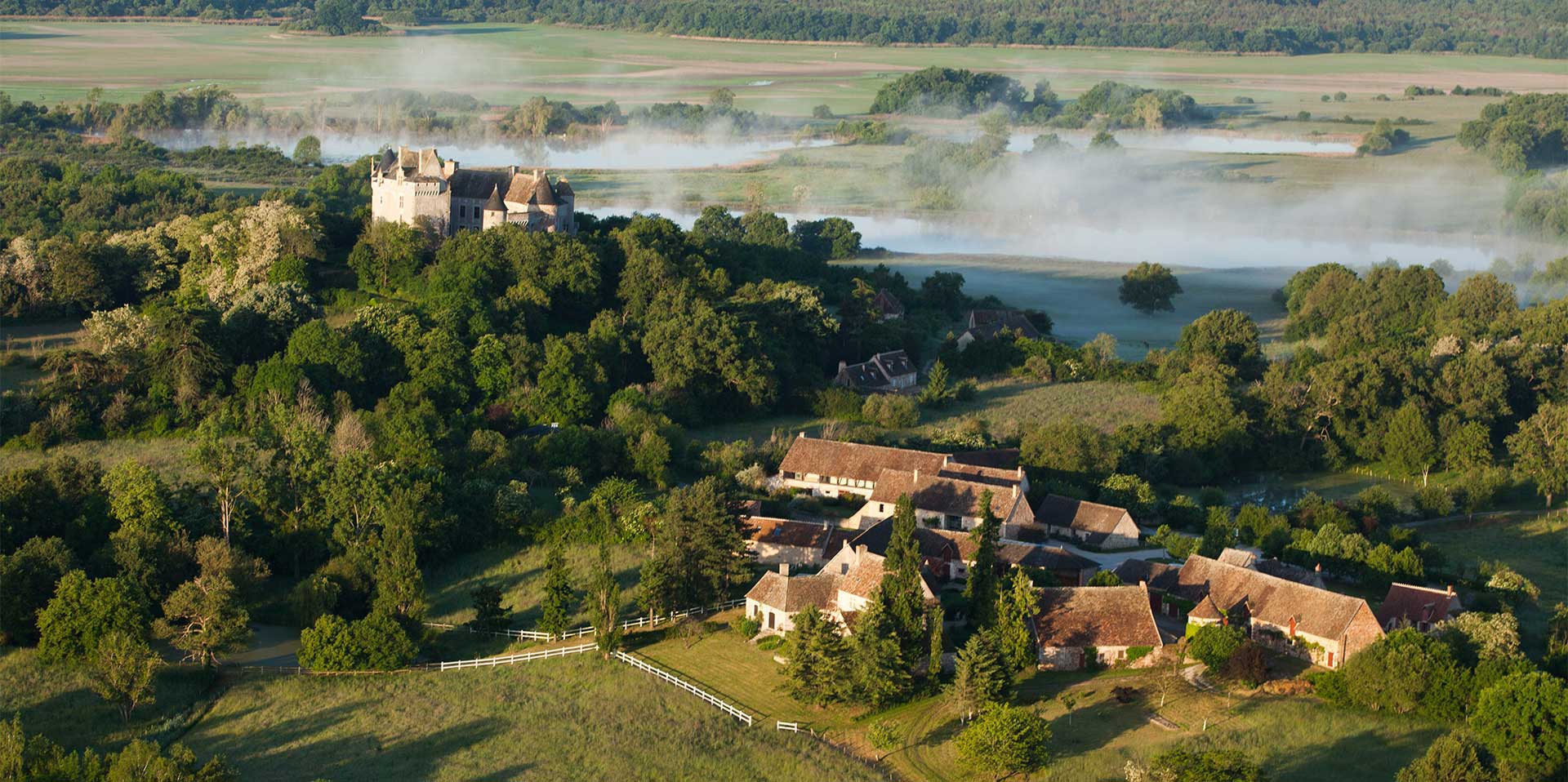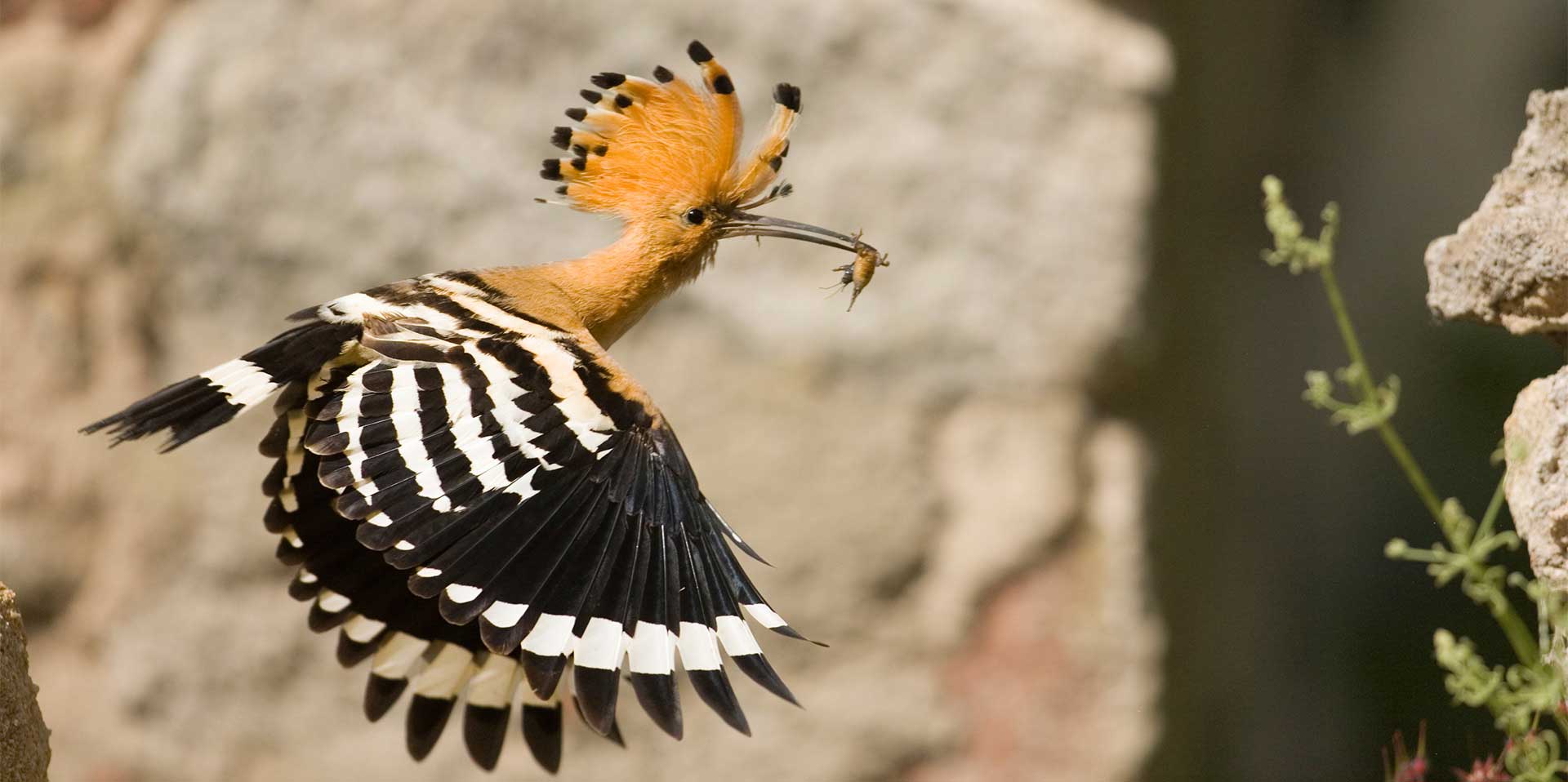Where to watch birds in France…
Over 400 species of birds occur on a regular basis in France and the French regional parks are areas of exceptional biodiversity. For each of the 8 regional parks represented here, you can download lists of which birds can be seen when and where, together with information about how to get there and where to stay. A wealth of free resources to help you plan your next birdwatching trip to France!
https://www.birdingfrance.info/
The Alpilles regional park
The Alpilles is a remarkable yet little known inland birdwatching area bordering the Camargue and the Crau.
The craggy limestone escarpments are home to many sought after species including Wallcreeper in the winter months, Egyptian vulture in the summer and Bonelli’s eagle all year round. These dry abrupt landscapes alternate with olive groves and fruit orchards that are attractive to a different range of species including: Roller, Bee-eater, Hoopoe, Rock sparrow and many other emblematic Mediterranean species. The warm sunny climate offers birdwatchers from northern Europe a tempting destination all year round, and is especially worth a visit in winter.
Access : With easy access by train to Avignon, the Alpilles regional park is a gateway to Provence and close to a wealth of cultural heritage sites such as those at Avignon and Arles; this rich birding area has much to offer any non-birding members of your group.
Download the Life Alpilles smartphone application and follow 6 birdwatching walks combining opportunities to see 13 top species including Eagle owl, Little bustard, Lesser kestrel and Short-toed eagle among others. Check out the interactive bird information kiosk at the Urgonia museum and try out the games, videos, links, information sheets and find out about local birding trips.
Top birding sites : plateau de la Caume, vallon des Glauges, les Baux de Provence
Top bird species : Wallcreeper, Bonelli’s eagle, Egyptian vulture, Eagle owl, Bee-eater, Roller
Other wildlife : 19 species of bats, 500 species of insects, 20 species of reptiles & amphibians
https://oiseaux.parc-alpilles.fr
Boucle de la Seine Normande regional park
Where the Seine meets the sea. Before arriving at its final destination the Seine, the river that flows through Paris, makes several large meanders over a flat, alluvial plain before flowing into the crique de Rouen and the Atlantic Ocean. Not far to travel from the south of England, it does however have quite a few breeding species or birds that are absent or hard to find in Britain yet relatively common here. The list is quite long but includes Bluethroat, Melodious warbler, Short-toed treecreeper, Nightingale, White stork, Spoonbill and Golden oriole, among others.
Access : Easy to get to and well worth a short visit. The easiest way to get there is by ferry to Le Havre and if travelling in September the ferry crossing may well provide the chance of seeing interesting sea birds, especially when arriving near the French coast.
A birding trip to the Boucles de la Seine Normande could easily be extended to include the Cotentin peninsula, another very good area for birding, not that far to the west.
Top birding sites : Tourbière d’Heurteauville, Seine estuary nature reserve, Grand’mare observatory, St Sulpice de Graimbouville trail
Top bird species : Bluethroat, Lesser spotted woodpecker, Melodious warbler, Golden oriole, White stork
Other wildlife : Butterflies , Dragonflies, Amphibians
https://www.pnr-seine-normande.com/decouvrir/preparer-son-sejour/ou-observer-les-oiseaux/
The Camargue regional park
The Camargue is the extensive delta of the Rhone river where it meets the Mediterranean. Internationally renowned for the birds that occur, and rightly so! It is probably best known for its Flamingo colony, the only regular nesting site in Western Europe and a species you are bound to see. Many, many other interesting bird species breed here: Glossy Ibis, Kentish Plover, Collared pratincole, Bee-eater, Short-toed eagle, Slender-billed gull, Spectacled warbler... the list is enormous with interesting species in every habitat: lagoons, rice-paddies, salt pans, riverside woodland… And the rest of the year can also well be worth a visit. Many migrants occur with rarities to be found – for example, Broad-billed sandpiper is seen annually in the salt pans and White-winged tern over the marshes. Winter sees the arrival of many waterfowl, including thousands of Red-crested Pochard, with accompanying predators – Spotted Eagle occurs annually. And many species, from the Flamingo to Sardinian warbler are resident, and can be seen throughout the year.
When visiting the Camargue it is well worth combining a trip with the nearby Alpilles regional park to the north and with the dry, stone plain of the Crau to the east, both within easy reach and with complementary sets of bird species.
Top birding sites : Domaine de la Palissade, Marais du Vigueirat, La Capelière, Camargue beaches
Top bird species : Flamingo, Glossy ibis, Kentish plover, Slender-billed gull, Spectacled warbler, Bee-eater, Collared pratincole
Other wildlife : Camargue bulls (Raço di Biou) and horses , European pond turtle, Southern festoon butterfly, European beaver, Wetland orchids, Mediterranean tree frog, Green lizard, Sea lavender, Common reed, Marsh samphire…
The Forêt d’Orient regional park
Within easy reach of Paris, the Forêt d’Orient lakes may not be as well known as their sister lake, the “Lac du Der”, but they too offer interesting bird species throughout the year. Like the Lac du Der, Cranes occur in large numbers during the winter months with the largest numbers during migration in November and February. Amongst other sought-after species that occur during migration, top of the list would probably be Black Stork, which occurs in good numbers in September. The area is also well known for wintering White-tailed Eagle that is now breeding in the area. Many species rarer or even absent farther north breed here and can be quite easy to find with a little looking: Black and Middle Spotted Woodpeckers, Melodious Warbler, Red-backed Shrike... to name just a few. Rarer species may need a little more effort but can provide sightings of species such as Red-necked Grebe (only breeding site in France), Grey-headed Woodpecker and more...
Any visit here should be combined with the nearby Lac du Der. There is much else to see, with the area known for butterflies and dragonflies. And, of course, it’s in Champagne country, a visit to a Champagne cellar may provide for diversity on a rainy day.
Top birding sites : Lac du Temple – Valois hide, Lac du Temple- Pic Vert Hide, Lac Amance – Radonvilliers hide, Lac d’Orient – hide between, Géraudot and the Maison du Parc
Top bird species : Red-necked grebe, Cranes, Black-stork, White-tailed eagle, Red-backed shrike, Black & Middle-spotted woodpeckers
Other wildlife : Wild cat, Wild deer and boar, Flooded meadow flora
The Golfe du Morbihan regional park
An inland sea on the coast of southern Brittany. A multitude of islands and a long coastline provide shelter for many coastal species, the most emblematic is the Kentish Plover. Although not easy to find with a little persistence and local knowledge the sighting of one of these charismatic small waders shouldn’t be too difficult.
The area has many other attractions for the birder from farther north with breeding Black-winged stilt, Pied avocet, Mediterranean gull, Bluethroat, Fan-tailed warbler, Cirl bunting, Black and Lesser spotted woodpeckers, Eurasian rock pipit, Long-eared owl and Short-toed treecreeper all provide for year round interest.
The picturesque Brittany coastline is alive with birds in winter, there are very large numbers of many waders and enormous numbers of Brent Geese.
Not far to the south is the Brière regional park, where a visit in late spring or early summer can add additional interest with such birds as Black and Whiskered Terns nesting and even the White-winged Tern now a regular sight in the spring.
Top birding sites : Réserve naturelle des Marais de Séné, Marais de Lasné, Marais de Brennegi
Top bird species : Kentish plover, Bluethroat, Mediterranean gull, Black woodpecker, Brent geese
Other wildlife : Butterflies, Dragonflies
The Haut Languedoc regional park
Unknown, unspoilt and probably under-watched, the Haut Languedoc regional park, not far from the Mediterranean coast and half-way between the Pyrenees and the Cévennes, is worth a visit for the scenery alone. Steep-sided limestone gorges, lake-topped plateaux and low mountains are home to a wide range of southern species with birds of prey being of particular interest. The list is long, here we give a few of the more interesting: Griffon vulture, Bonelli’s eagle, Eagle owl, Blue Rock thrush, Crag martin, Hoopoe, continental Dipper, and many of the Mediterranean warblers.The area can be very good for raptor migration (particularly Honey Buzzards) in early autumn.
Other wildlife is also of great interest and butterfly enthusiasts will enjoy southern species such as Provence Orange Tip and Cleopatra, to name just two of many.
A visit here can easily be combined with the nearby Narbonnaise regional park, the Cévénnes national park or even the Eastern French Pyrenees and the cultural heritage interest of the Cathar country.
Top birding sites : Minervois, Massif du Caroux, Causse de Caucalières
Top bird species : Griffon vulture, Bonelli’s eagle, Eagle owl, Alpine accentor, Blue rock thrush, Lesser kestrel, Bee-eater
Other wildlife : Orchids, Drosophera, Bats, Butterflies, Ocellated lizard & other reptiles, Moufflon (a Corsican mountain sheep!)
The Marais du Cotentin et du Bessin regional park
A very unspoilt part of France, the park covers much of the Cotentin peninsula in Normandy. The area away from the coast consists mainly of low-lying, flat water meadows, with much of the grazed area becoming flooded in winter. Many species occur with several that are of particular interest: White Stork, Bluethroat, Melodious, Savi’s and Fan-tailed Warblers among others. The coast can be very productive with large numbers of waders from August to April.
However, the area is probably best known by birders for the passage of large numbers of migrants at various strategic sites. Of particular interest are the two headlands at the north of the peninsula, the Cap de la Hague in the north-west corner and the Pointe de Barfleur at the Phare de Gatteville at the north-east corner. Both are outside the park but within easy reach and can provide for very spectacular sea-watching during the right conditions, mainly in September. Good views of Balearic Shearwater and Mediterranean Gull are almost guaranteed, all 4 species of skua, Sabine’s Gull and much more a distinct possibility.
In the right season butterflies may be of real interest, and rare species such as Alcon Blue can be found.
A birding visit to the area can be coupled with a visit to the Normandy Landings beaches, some within the park, and the Mont Saint Michel is not very far away.
Very easy to reach by ferry from England to Cherbourg : a crossing in September may be very interesting for seabirds.
Top birding sites : Domaine de Beauguillot, Marais des Ponts d’Ouve, La Baie des Veys/Pointe de Brévands
Top bird species : White stork, Bluethroat, Savi’s warbler, Balearic shearwater, Mediterranean gull, Sabine’s gull, 4 species of Skua
Other wildlife : Butterflies (Marsh fritillary, Alcon blue); Orchids (Epipactis palustris, Spyranthe aestivalis, Dactylorhiza praetermiss, Dactylorhiza incarnata, Orchis laxiflora, Dactylorhiza fuchsia); Dragon and damselfliesVariable Blue, Four-spotted chaser, Hairy dragonfly, Emperor dragonfly, Lesser Emperor dragonfly, Variable damselfly, Downy emerald damselfly, Scarce Emerald damselfly, Black darter; Plants (Bell heather, Great sundew, Heather, Dwarf gorse, Broad-leaved Cottongrass).
https://parc-cotentin-bessin.fr/les-oiseaux
The Narbonnaise en Méditerranée regional park
The Narbonnaise regional park in the south-west corner of France, on the Mediterranean coast and not far from the Pyrenees has a lot for the birder from northern Europe. The varied habitats: salt pans, lagoons, marshes, garrigue, limestone escarpments… provide for a great variety of species. There are many resident birds of great interest: Flamingo, Bonelli’s eagle, Eagle owl, Kentish plover, Slender-billed gull, Thekla lark, Blue rock thrush... and a few that occur only in this corner of the country : Pallid swift and Spotless starling. Things get even better in the breeding season with the return of Lesser kestrel, Roller, Golden Oriole, Black-eared wheatear... And as it is on the Western Mediterranean flyway, migrants are numerous and sometimes occur in large numbers: Honey Buzzard, Black kite, Red-rumped swallow... all in all too many to mention. But not only that, it is an exceptionally interesting area for other wildlife, reptiles (Ocellated Lizard...), butterflies (Iberian swallowtail, Spanish & Southern festoons...), orchids galore...
Still not that well known by birders and other naturalists from the north, it is very well worth a visit… or two, and the Birdwatching Narbonnaise smartphone app will help you get the most out of your stay.
A stay here can be combined with visits to other birding sites, such as the Haut Languedoc regional park, the eastern Pyrenees or even the Catalonian coast in Spain. There are also many other tourist interests such as the medieval walled city of Carcassonne and other ruins relating to the history of the Cathars.
Top birding sites : Pissevaches lagoon & filtration ponds, Leucate plateau & Les Coussoules, Aude river banks and flood plain, Roc de Conilhac (autumn migration spot (15 July to 15 November if stiff NW wind).
Top bird species : Bonelli’s eagle, Eagle owl, Thekla lark, Blue rock thrush, Lesser kestrel, Flamingo
Other wildlife : Orchids galore, Wild tulips, Dwarf iris and a host of other wildflowers; Butterflies (Southern white admiral, Two-tailed pasha, Southern festoon & Spanish festoon…), Reptiles : Ocellated lizard, 4 species of grass snake; Amphibians include Marbled newt
https://www.parc-naturel-narbonnaise.fr/applis-mobile/birdwatching-narbonnaisee/O





















































































